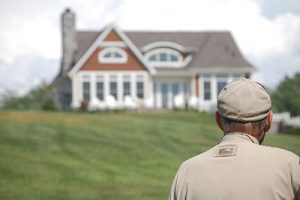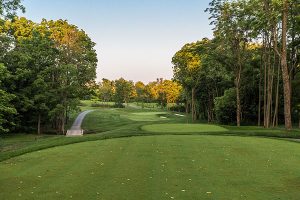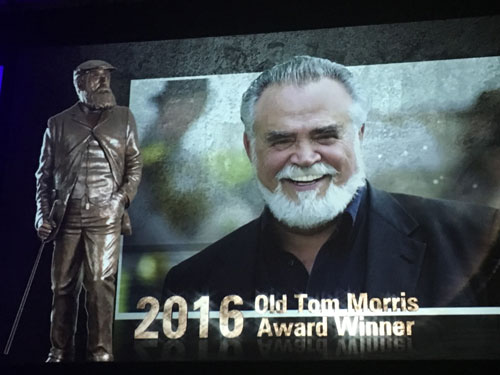A closer look at the design style of Pete Dye
 With 54 years, 179 golf courses and a PGA Lifetime Achievement award under his belt, Pete Dye is celebrated as one of the greats in the industry. This fall will be the unveiling of his latest project, Chatham Hills.
With 54 years, 179 golf courses and a PGA Lifetime Achievement award under his belt, Pete Dye is celebrated as one of the greats in the industry. This fall will be the unveiling of his latest project, Chatham Hills.
Dye spent five years and hundreds of hours crafting a championship course at Chatham Hills, a new course and community located in Westfield, Ind. The par-72, 7215-yard course is part of an upscale residential community featuring nature trails, 40 acres of parks, clubhouse with swimming, fitness, tennis, dining, bowling and more.
Chatham Hills sits on land originally purchased in 1835 as part of the Northwest Territory and focuses on the area’s natural characteristics — including streams, ravines, hills and forests.
There’s something else interesting about the land it sits on: The elevation. For those not familiar with Indiana’s geography, the state is mostly flat. But the course includes an elevation change of almost 100 feet, with the 10th hole forcing players to hit down 80 feet.
Dye tapped Tim Liddy to help him with the Chatham Hills project. The pair go back decades, starting with their first project in the late 80s. The two have continued to work together on and off ever since.
It’s all in the details
Pete Dye has a specific style to his designs, and after working closely with him for more than two decades, Liddy has had a front row seat to his creative process.
 As project architect, Liddy draws a rough design of the golf holes, gets it to about 50 percent complete, and then passes it to Dye for him to add the details, like exact green location, bunker placements and other course aesthetics. The two have even created their own form of shorthand communication that has been known to leave many scratching their heads in confusion.
As project architect, Liddy draws a rough design of the golf holes, gets it to about 50 percent complete, and then passes it to Dye for him to add the details, like exact green location, bunker placements and other course aesthetics. The two have even created their own form of shorthand communication that has been known to leave many scratching their heads in confusion.
Dye’s designs incorporate subtle — yet intentional — traits that can sometimes go unseen by the casual golfer. For example, Dye likes to place deep bunkers in the back left of a green where a good player would miss the green, while he places shallow bunkers in the front right for where the average golfer would miss the green.
“There is so much logic to his designs that are endless,” said Liddy. “He helps the average golfer, while challenging the strong player on so many of his courses.”
For approach shots, he specifically designs the area to help golfers kick the ball onto the green by keeping the greens open at the front. The good player will rarely hit to the approach area, instead going for the green.
When talking about more challenging projects, Liddy praises Dye’s work with visual deceptions, especially when designing courses for golf professionals on tour. To Dye, “when you get a pro thinking, you’ve already won the game.”
Pete Dye’s design tips
During his more than 20 year relationship with Dye, Liddy has picked up quite a few design tips from the legend himself. Here are a just a few of his ideas:
- You need to have a variety of golf holes.
- There needs to be plenty of room to actually play golf.
- Create drama for each shot. Make the hole look hard, but have it play easy.
- The golf course must be practical and must be maintainable by superintendents.
- Course must fit the client because each client is different. You don’t build every golf course hard.
- There needs to be a balance of shots. Some golfers hit right to left, while others hit left to right. Develop a balance so as to not reward one player over another.
“Everything I know about golf design either comes from the old golf course in St. Andrews or Pete Dye,” said Liddy. “He has such a magical eye for architecture.”
Superintendent David Hardesty joined the Chatnam Hills team in the spring. A graduate of the University of Kentucky, Hardesty came from Big Cedar Lodge Golf Courses in Ridgedale, Mo., home of the 2015 Bass Pro Shops Legends of Golf Tournament, where he was director of golf course maintenance.
Hardesty was in charge of making final decisions on all the grassing, green varieties, and giving Dye and Liddy his final recommendations on tree clearing so he has enough sunlight to grow turf.
Photos: Chatham Hills










